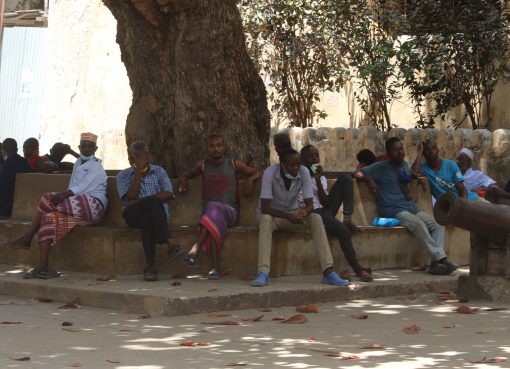
A Ward rep has proposed the drafting of a petition to the Machakos County government aimed at pushing the executive to shed more light to the public on its preparedness in dealing with the locust menace that has so far affected a total of 19 counties in Kenya.
Presenting the proposal before the house, the Muthetheni MCA, Jeremiah Mutisya Munguti who doubles as the Assembly Committee Chair on Devolution and Intergovernmental Relations is also seeking for the allocation of emergency funds in the County Supplementary budget to tackle the crisis which has also hit the County.
He said with the locusts moving across the country clearing farms and vegetation with alarming speed, the government should immediately put in place mechanisms to help deal with any unforeseen outcome, including paying compensation to farmers who may end up losing their produce and livestock.
“Allow me madam Speaker to seek a statement from the county executive on what the department of Agriculture has done to counter locust invasion so far and if the County Executive Member on Finance has set aside emergency funds in the event of further invasion in the county. I wish to move this statement so that the house committee can give us a way forward,” he said.
Munguti said the locust invasion is not just a county disaster but a national crisis and should therefore be a shared responsibility between the two levels of governments before it spills out of control.
He noted that the distribution of functions between the national government and county government paragraph two of the Fourth schedule of the constitution bestows on the county government powers in handling, among other roles, crop and animal husbandry together with plant and animal disease control.
He said it was a constitutional responsibility for both the national and county governments to ensure every Kenyan is free from hunger and has sufficient food of quality standard.
Last month the county government of Machakos cautioned farmers against rushing to harvest their maize crop following the sighting of locusts in several parts of the county.
The Machakos County Director of Agriculture, James Kariuki instead told farmers the county government was doing everything possible to ensure the situation was brought under control by tracking the destructive insects’ movement in order to spray them out.
Kariuki made the statement after reports confirmed the locusts had crossed into county from Embu on January 27 and invaded several farms in Masinga Sub County.
The officer said the County Government was coordinating efforts with the Plant Protection Service Division in conducting aerial spraying on the affected farms using a plane based at the Masinga Airstrip.
The swarming locust have already spread across 19 counties so far leaving a trail of destruction in their wake after clearing vegetation and farms and threatening the livelihoods of millions of people and thousands of animals.
Among the latest counties to have fallen to the devastating insects, include Bungoma, Laikipia and Elgeyo Marakwet.
Other counties that have already borne the brunt of the swarms, include Embu, Wajir, Mandera, Marsabit, Isiolo, Samburu, Meru, Turkana, Tana River, Baringo and Kirinyaga.
Kenya has employed the use of both aerial and motorized hand sprayers to contain the locust menace that has been described as the worst of its kind in the last 70 years.
The Food and Agriculture Organization has already raised the red flag of massive losses in food crops in Kenya and neighboring countries due to the worsening locust invasion in the region.
In its latest report that was released last month, the global food body warned that the upcoming heavy rains in March could spell doom for over 19 million people in the region owing to the ability of locusts to continue hatching and breeding eggs.
“Under a worst-case scenario, where the current locust upsurge is not quickly contained and becomes a plague by the next main cropping season, significant crop and pasture losses would cause food security in affected areas to worsen further. Some swarms in the north have moved back into southern Ethiopia while others are now mature and laying eggs that will hatch after about two weeks, giving rise to hopper bands in February and March,” the agency said in the January 24 report.
About 70,000 hectares (172,973 acres) of land in Kenya are already infested.
Already the UN is warning of an impending global food crisis if the marauding swarms of locusts ravaging crops and livestock across East Africa are not brought under control.
Meanwhile, residents of Burat Ward, Isiolo County are appealing to the government to intervene and spray locusts that have invaded grazing areas for their animals.
The residents of Alamach, Lotiki and Shambani villages in Burat Ward expressed fear that emergence of a swarm of new generation desert locusts which they suspect to have hatched from the swarms that invaded the area in January may cause more destruction to their pastures.
They said the new pests appeared in the last few days and has now spread to nearby areas of Lowangichu, Napuseru, and Armoroti hills where they had set aside as their pasture reserves for livestock during dry seasons.
A youth leader from the area, Sammy Lorere, said that the adult locusts that invaded the area a month ago had already depleted several hectares of vegetation, adding that the eggs left behind have now hatched into new ones, caused fear among members of public that the menace is only increasing.
By KNA Team





